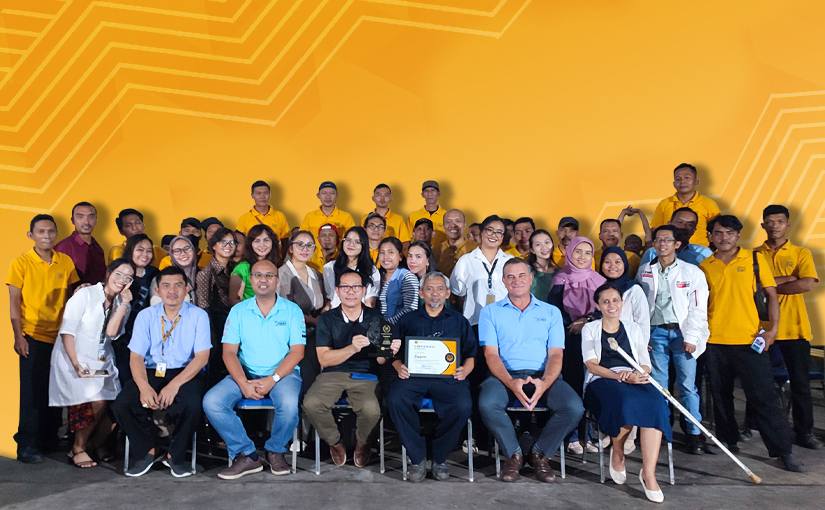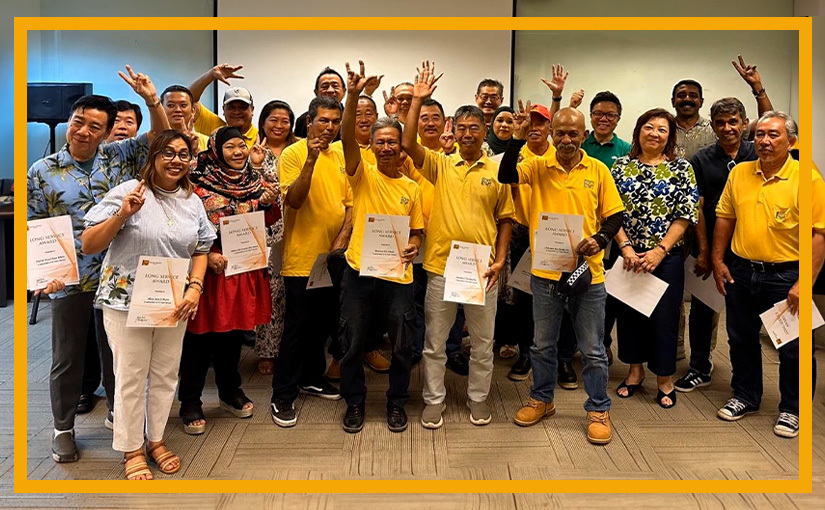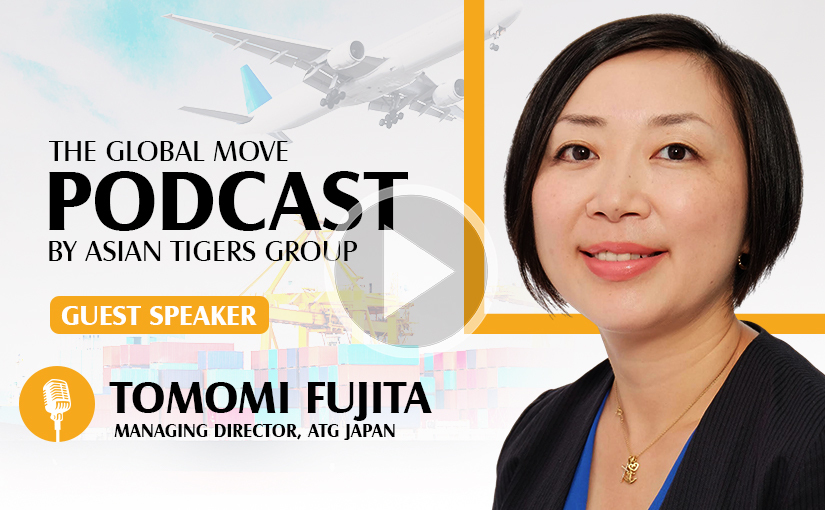IT's Moving Impact Helps Asian Tigers Roar
The IT’s moving impact movements that helped the Asian Tigers roar and transform the relocation and moving industry
(Source from South China Morning Post, Friday 17 November 2017)
When we think about relocation services, information technology is understandable to hold a distant second place in our minds. Moving, as an activity—be it packing boxes, transporting your stuff, or setting up in a new location—would appear rather removed from the purely digital world of software and systems. But, as YB Ng, Senior Vice President of Sales and Marketing at Asian Tigers Mobility, points out, IT’s role in the relocation sector is not just huge; it’s transformative.
IT in Relocation Services: The Evolution
Though inconspicuous at times, “IT’s impact on relocation services is huge,” says YB Ng. He emphasizes that the role and implications of IT in the relocation industry will only grow stronger as companies increasingly rely on digital solutions to manage the complexities of moving employees and households globally.
Reflecting on the change in the industry over the last decade, Ng notes a telling shift: “If you look back 10 to 15 years ago in this business versus what we are doing today, the volume easily has more than doubled in terms of people moving around, but administratively, we have not increased the number of people, so what makes this possible and is the key difference is IT.”.
Indeed, in relocation services, the integration of IT has been able to truly make a difference today: bigger volumes of relocations can be managed by companies like Asian Tigers Mobility without a corresponding increase in administrative staff. This is not about more clients but better, more personalized service accorded to each one of them.
How IT Transforms Operations
One of the major ways in which IT has revolutionized this relocation industry is through the ease of operation brought in. Relocation includes a host of logistic issues, managing schedules, inventories, and customs documentation, and the accounting of each product from the very beginning to the end. IT systems and software made this possible for relocation companies to do their tasks with a level of precision and efficiency not possible earlier.
For instance, advanced inventory management systems in companies enable the tracing of every single item being moved, therefore reducing the risk of loss or damage. This can grant real-time updates to both the relocation company and the client, hence wholly, the transparency and peace of mind one desires when moving.
Also, IT improves communication and coordination among the several teams involved in a relocation. Moving crews may likewise be linked and updated through digital platforms that identify real-time updates, thereby ensuring the whole process flows well. This is particularly important for international relocations, where timing and coordination are critical in getting through customs and other regulatory requirements.
Improving Customer Experience
Beyond operational efficiencies, IT has also played a major role in improving the customer experience within the relocation industry. Operational services require real-time access to information and service delivery, which the customer in today’s digitized world expects to receive. This is achieved by the relocation companies through IT in designing more user-friendly and customer-focused services.
For example, at Asian Tigers Mobility, customers can manage their whole move via a digital platform that includes the possibility of tracking the progress of their relocation, accessing important documents, and even communicating directly with the relocation team. All in all, this will be a much more open, responsive, and tailor-made service, reducing much of the stress and uncertainty classically aligned with moving.
Ng cites these IT-driven enhancements as a core: “For these customer segments, transparency and the ability to track is important. Whether it be the tracking of total spend, when to pay utility bills or tax bills, a properly designed system management system is paramount. It has to be a centralized approach with accurate, easily retrieved, rapidly analyzed data and metrics.”
The ability to inform clients about the move, minute by minute and with accuracy, is not a nicety—it is a competitive edge. This engenders trust and reduces anxiety, most importantly, allowing the client to feel more in control of the relocation process.
How Data Analytics and Personalization Come into Play
Another major impact that IT has on the relocation industry is personalization of services through data analytics. By analyzing data from previous relocations, companies understand a great deal about client preferences, common challenges, and possible areas for improvement. Only thereafter does a data-driven approach allow relocation companies to come up with a more bespoke service offering, dovetailing with every client’s unique needs.
Ng indicated that this use of IT is not limited simply to issues of efficiency, but more about enhancing the experience for the client: “An HR person managing 5,000 moves would also use these tools to identify how they would call the movers from time to time, and so, IT, how it drives the systems and processes, determines what kind of reports they are seeing.”
Such data analytics gives relocation companies an opportunity to preempt and present proactive solutions to potential problems. If personalization reaches this level, companies like Asian Tigers Mobility will differ from others and further reassure customers of their commitment to excellent service.
The Human Element: IT as an Enabler, Not a Replacement
While IT has undeniably revolutionized this industry, Ng has been very quick to emphasize that it is an enabler and not a replacement for the human factor within the business. “The thing with IT and these services, it’s just like restaurants. Restaurants can actually utilize IT to help simplify ordering or promote their food and services, but you can’t move away from the fact that there is actually someone who is eating, waiting at your table, and the chef who has to do all the cooking.”
Regarding relocation, it involves the fact that much as IT eases processes, improves communication, and offers great insight, a successful move still relies on the skill, care, and ‘human touch’ delivered by the people involved. Packing, moving, and setting up a new home require dexterity and an eye for detail—human-like qualities that technology can assist but not totally replace.
Future Trends: The Continued Integration of IT
Looking ahead into the future, Ng sees even further integration of IT into the relocation industry. The more technological advancement that happens, the greater its applicability will open up to better relocation services. He pictures the use of artificial intelligence to optimize logistics, adopting automation to handle routine tasks, and the potentials of virtual reality to help clients explore new locations before they move.
Ng also, however, had to underline the fact that very essence of relocation—care, attention to detail and a unique service—would remain the same no matter how far technology could advance. IT will go on being a strong tool in raising these principles to a higher level, but it is never able to stand in lieu of real professionals who understand how complex moving can be and are dedicated to making the process smooth for their clients.
Conclusion: A Balanced Approach to IT and Relocation Services
The inclusion of IT in the relocation industry made quite a change; from smoothening operations to improving customer experience and allowing more tailored services. According to YB Ng, Asian Tigers Mobility, IT has become the very fabric necessary for modern relocation services to function with efficiency, transparency, and customer satisfaction.
While technology may increasingly assume a more pivotal role in how one moves, the human touch—higher expertise, greater care, and dedication of professionals who manage and execute the move—is the keystone to success. In terms of providing exceptional service, as the industry continues to evolve at breakneck speeds, what will be vitally important is the adoption of balanced approaches that somehow assimilate the best that both technology and human skill have to offer.










